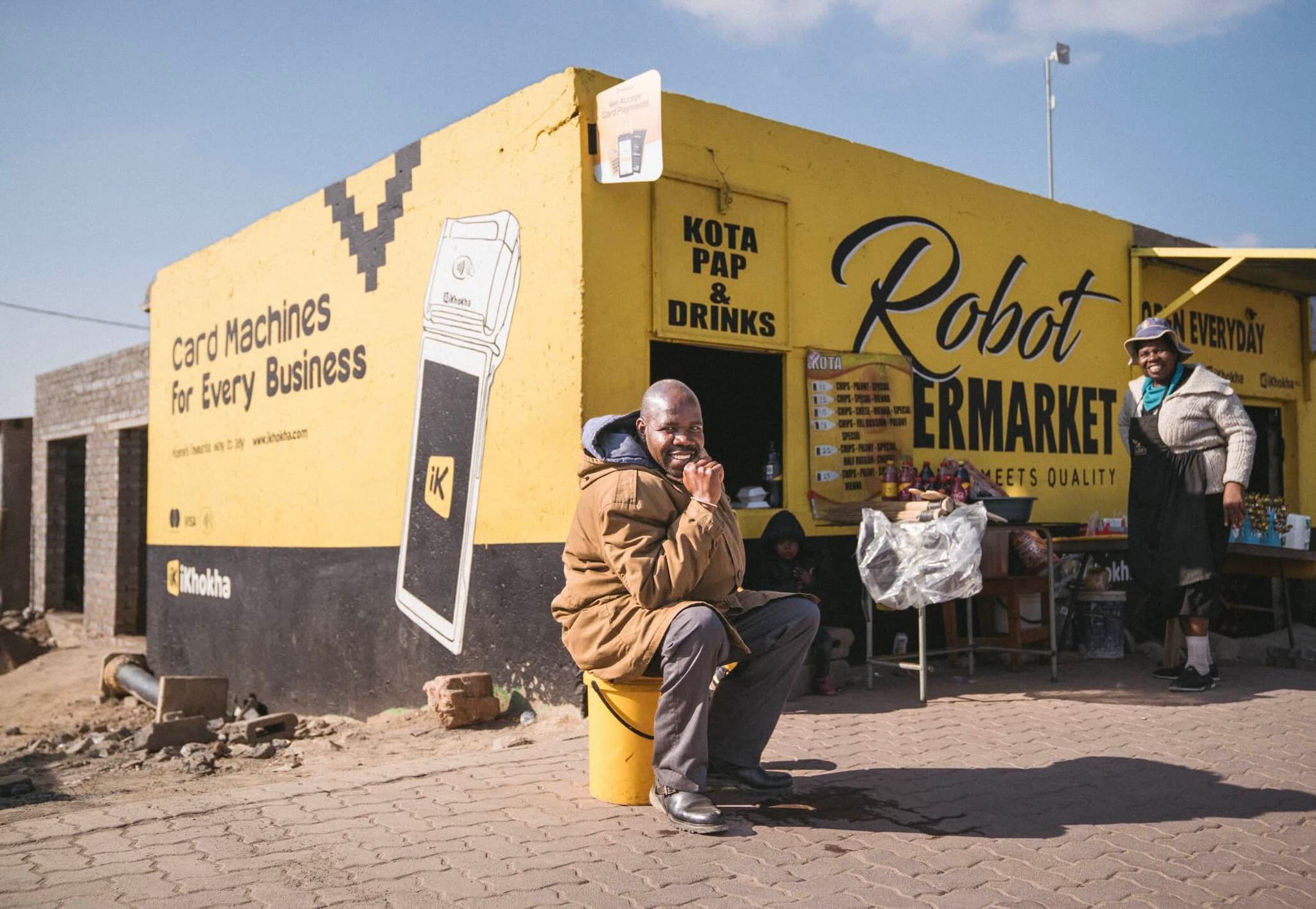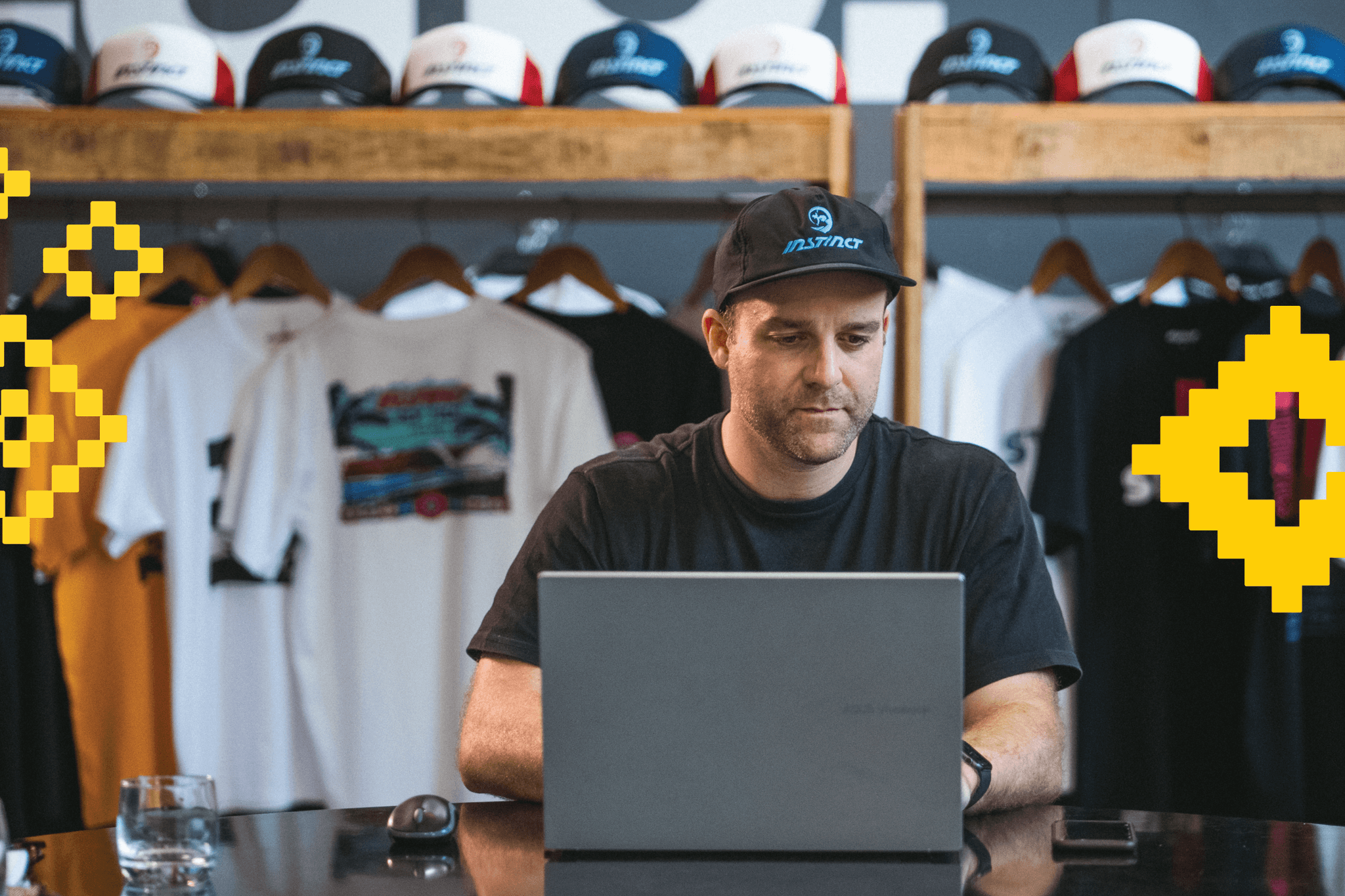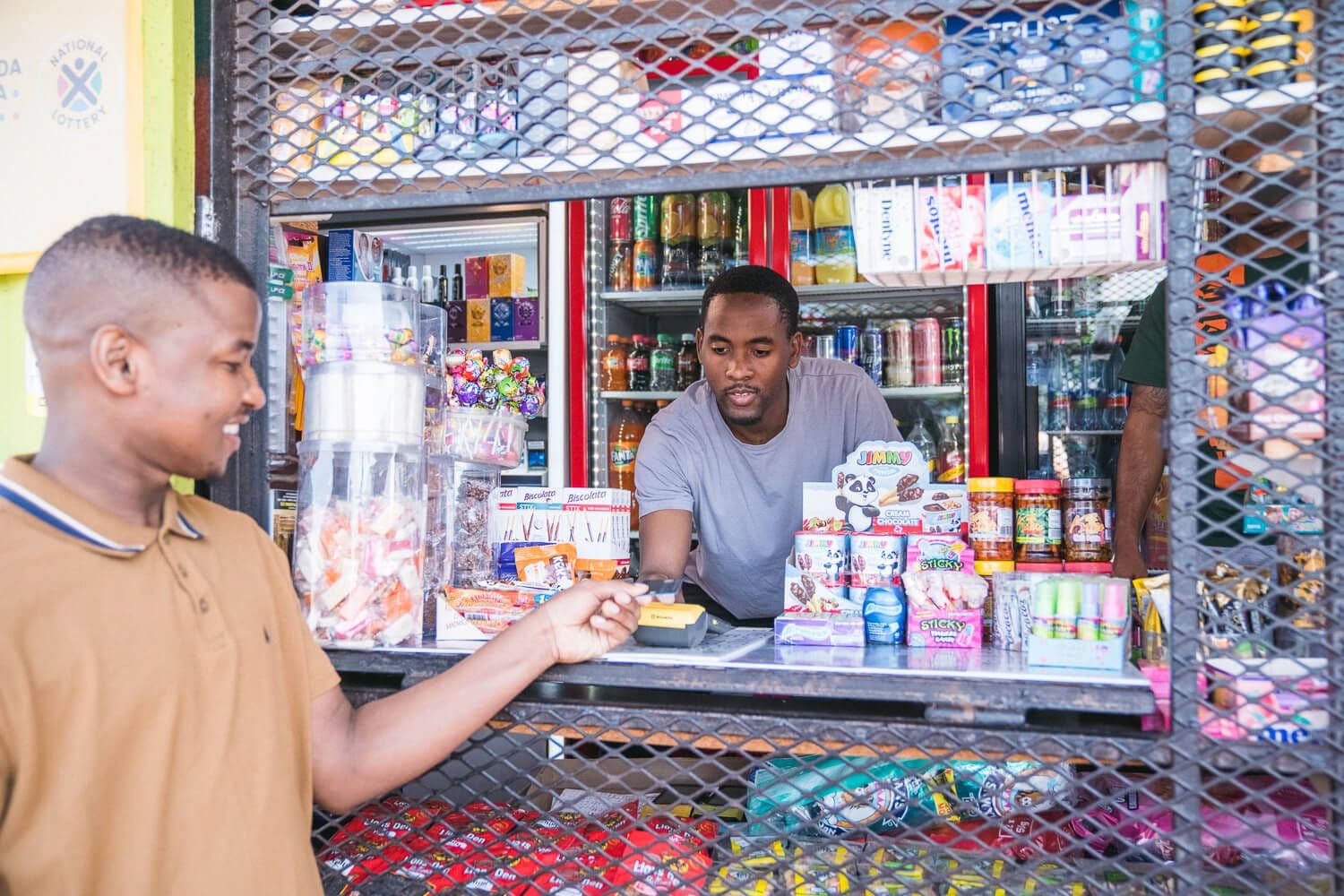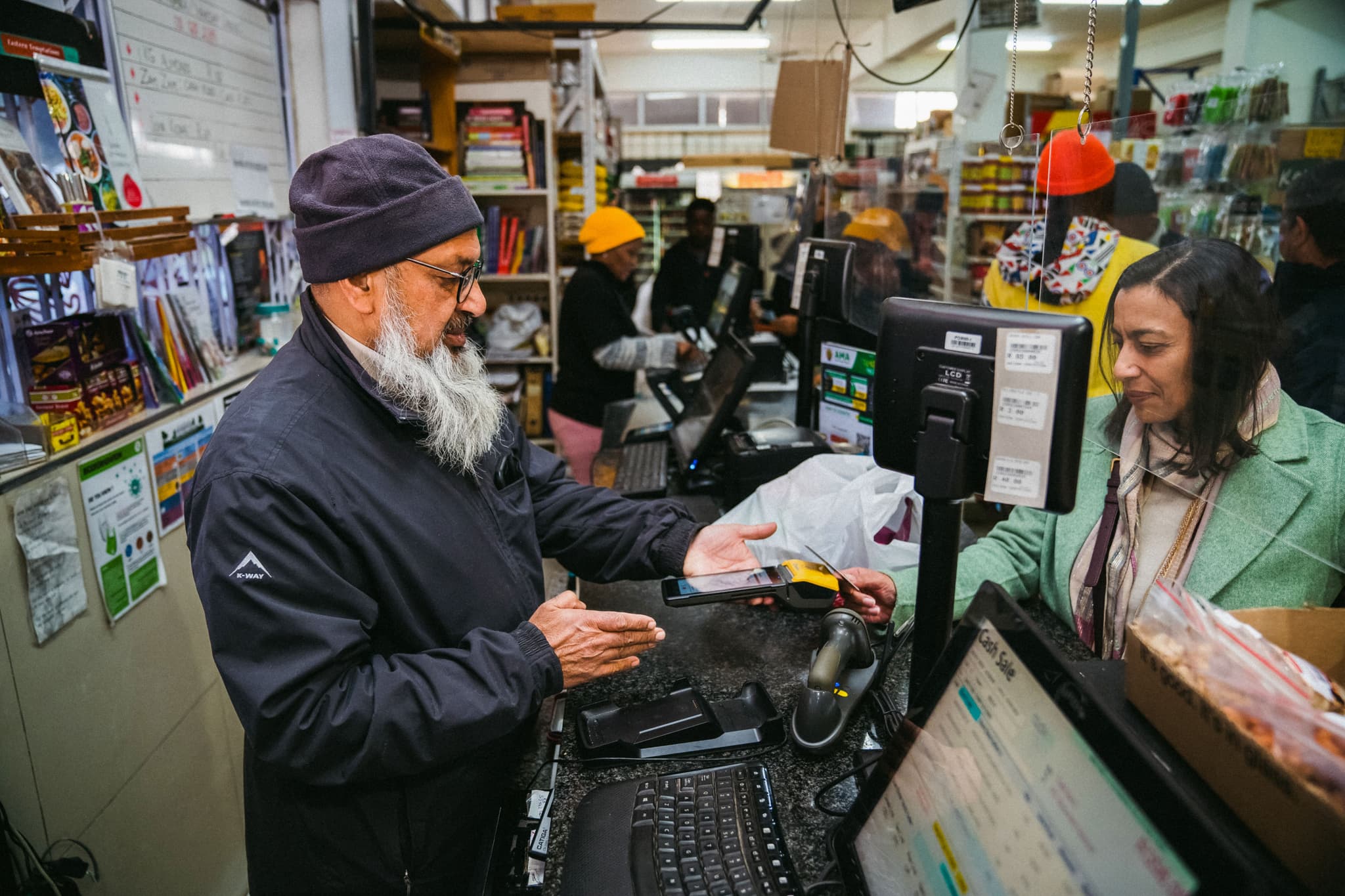
How to Start a Business in South Africa
Want to start a business in South Africa? Follow this practical, step-by-step guide to plan, register and launch your small business with confidence.
Table of Content
- Introduction
- How to start a business in South Africa: 11 simple steps
- Step 1: Are you ready to start a business?
- Step 2: Find a business idea that solves a real problem
- Step 3: Do market research
- Step 4: Pick a business model that works for you
- Step 5: Write your business plan
- Step 6: Register your business and choose a structure
- Step 7: Get your licenses and permits sorted
- Step 8: Open a business bank account
- Step 9: Hire help and free up your time
- Step 10: Market your business without breaking the bank
- Step 11: Get a card machine and make your first sale
- You’ve got this
Are you considering starting your own business in South Africa?
Respect to you for even thinking about it, taking the first step is something most people never do.
Think of this guide as your blueprint for building a business that stands the test of time. Maybe you’ve got an idea that won’t stop buzzing in your head, or maybe you’re simply ready to take the leap, either way, this is where the groundwork begins. We're not here to sell fairy tales; starting a business requires perseverance and a lot of late nights. But you can definitely succeed if you have the correct mindset!
Ready to roll up your sleeves? Let’s dive in.
How to start a business in South Africa: 11 simple steps
- Assess your readiness to launch a business.
- Find a business concept that addresses a genuine issue.
- Conduct some market research.
- Select a business plan.
- Create a business plan.
- Decide on a structure and register your business.
- Submit an application for any permits or licenses.
- Open a bank account for your business.
- Employ assistance when it makes sense.
- Promote your company.
- Purchase a card reader and begin making sales.
Step 1: Are you ready to start a business?
The first question you should ask yourself if you're serious about launching a business in South Africa is if you're really prepared. Being your own boss entails more than just having freedom; it also entails balancing obligations, making difficult decisions and filling in when no one else can. Having the correct mindset is what keeps you going when things get difficult in the beginning, no matter if you're starting a small business or aiming for something bigger.
Before you jump in, take a moment to be honest with yourself. It takes more than just a brilliant idea to start. When things don't go as planned, you'll need to be disciplined, patient and willing to keep learning.
So, ask yourself:
- can I stay motivated when things get hard?
- am I comfortable taking calculated risks?
- do I have the drive to keep going when the results aren’t instant?
- am I ready to take responsibility for both success and failure?
If you’re answering “yes,” you’re already showing the mindset of an entrepreneur. There’s no perfect time to start, only a decision to begin. And if you’re reading this, you’re already further than most.
Step 2: Find a business idea that solves a real problem
A successful business doesn’t begin with, “What’s trending right now?” It starts with, “What do people around me actually need?”
You don’t have to reinvent the wheel. The best ideas often come from solving everyday problems. Look around your community. What’s frustrating people? What’s missing? That’s your opportunity.
Examples of great problem-solving ideas:
- affordable, nutritious takeaway meals in low-income areas
- a mobile hairdresser for elderly clients
- a local delivery service in areas not covered by big couriers
Spend time:
- talking to friends, family, or community members
- browsing local Facebook groups and forums
- reading product reviews in your niche
- asking people what they wish existed
Keep a notebook of ideas and see what comes up more than once. You’ll soon notice patterns. The sweet spot? A problem people are willing to pay you to solve.
And remember, your idea doesn’t have to be groundbreaking, it just needs to be helpful and well-executed.
Step 3: Do market research
Got an idea? Great. Now you need to make sure there’s actually a market for it.
Market research helps you test your assumptions and avoid launching something no one wants. It doesn’t have to be complicated, just intentional.
Start by answering:
- who are your ideal customers?
- what problems do they need solved?
- how do they currently solve those problems?
- who are your competitors, and what are they doing well (or badly)?
Ways to do simple research:
- create a free survey on Google Forms and share it on social media
- join Facebook groups and ask relevant questions
- interview potential customers in your community
- read reviews of competitors to see what people love or complain about
Use this info to shape your product, pricing, and positioning. It’ll also help you craft marketing messages that speak to your audience’s real pain points. A little research now = fewer mistakes later.
Step 4: Pick a business model that works for you
Your business model is how you’ll deliver your product or service and earn money. It should match your lifestyle, resources, and customer preferences.
There’s no one-size-fits-all. Here are a few common business models in South Africa:
- ecommerce: sell products online via an ecommerce store (like iK Webstore)
- service-based: provide a skill (like tutoring, beauty services, or cleaning)
- mobile business: travel to your customers (popular in rural or underserved areas)
- digital products: sell eBooks, templates, courses, or designs
- brick-and-mortar: run a physical shop, stall, or spaza
Think about:
- how much time and money you can invest upfront
- whether your customers are online or offline
- what kind of work fits your schedule and skills
If you’re starting lean, ecommerce or services are a great place to begin. The important thing is to choose something manageable now, you can always evolve later.
Step 5: Write your business plan
This step sounds scary, but don’t overthink it. A business plan isn’t about sounding impressive, it’s about staying focused.
It helps you map out your idea, budget wisely, and avoid shiny object syndrome. Plus, if you ever apply for funding or a loan, you’ll need one.
A good plan should cover:
- what your business does
- who your target market is
- how you’ll reach them (your marketing plan)
- startup costs and ongoing expenses
- expected income and profits
- how you’ll fund the business
Your business plan can be:
- a one-page overview to keep yourself on track
- a simple Google Doc you update regularly
- a more formal document for potential investors or lenders
The point is to get clear on where you’re going and how you’ll get there. And hey, if it changes as you grow? That’s okay too. A living business plan is better than no plan at all.
Step 6: Register your business and choose a structure
This is where your hustle becomes official.
Registering your business with the Companies and Intellectual Property Commission (CIPC) gives you legal protection and allows you to apply for tenders, open a business bank account, and build credibility.
But before registering, you’ll need to choose the right business structure. This decision affects how you pay tax, how much paperwork you need, and what kind of liability you take on.
Your options:
- sole proprietorship: easy to set up. ideal for one-person startups. just note: your personal and business finances aren’t separated.
- private company (pty) ltd: the most popular and flexible structure. recognised under the Companies Act. great for growth.
- partnership: if you’re building a business with someone else and want to share costs, risk, and responsibility.
If you’re unsure, start with a sole proprietorship and move to a private company as you grow. It’s affordable, quick, and sends the right signal to customers.
Step 7: Get your licenses and permits sorted
Depending on what you’re selling or where you’re operating, you might need a few extra documents to trade legally.
Don’t worry, it’s mostly admin, and it’s worth getting it done upfront to avoid fines or business disruptions later.
Here’s what you might need:
- health certificates (for food-related businesses)
- zoning approval (if running your business from home)
- industry-specific licenses (like for security or childcare)
Where to start:
- visit your local municipality’s website or office
- call your industry association or regulator
- check out the requirements on the CIPC or Department of Trade websites
It’s tempting to “just start and see,” but getting the right permits early builds trust with customers and makes it easier to get funding or insurance down the line.
Step 8: Open a business bank account
Opening a dedicated business bank account is one of the smartest decisions you can make from day one.
Why it matters:
- keeps personal and business finances separate
- makes it easier to track expenses and income
- helps during tax season
- looks more professional to customers and suppliers
- builds a financial history if you want funding later
Most South African banks offer small business packages. Shop around for one with low fees, digital tools, and good support.
Bonus tip: set up a basic accounting system while you’re at it. This could be a Google Sheet, a simple app, or cloud-based software like Xero or Sage.
Clean finances = fewer headaches = more time to focus on growing your business.
Step 9: Hire help and free up your time
In the beginning, it’s normal to wear all the hats, salesperson, admin manager, delivery driver, and customer service.
But as your business grows, your time becomes your most valuable asset. You can’t do everything forever. That’s when it’s time to hire help.
Before bringing someone on board:
- ask what tasks are draining your time or skills
- check if your revenue can support a salary or hourly wage
- get clear on your legal obligations (contracts, UIF, PAYE)
You could:
- hire a freelancer or part-timer
- bring in a family member to help informally
- outsource tasks like bookkeeping or social media
Start small. The goal is to free up your time so you can focus on growing, not just surviving.
Hiring the right person (even part-time) can move your business forward faster than you ever imagined.
Step 10: Market your business without breaking the bank
If no one knows about your product or service, you won't make any money, even if it's the best in the country. Marketing doesn't have to cost the earth. Start small, be consistent, and focus on developing relationships with real people.
Here’s what you can do:
- build a basic, mobile-friendly website
- set up a Google Business Profile so you appear in local searches
- use WhatsApp, Facebook, or Instagram to share updates
- create flyers or posters for your neighbourhood
- start an email list and offer simple tips or promos
What matters is not being everywhere, but being where your customers are. Post regularly. Show your face. Tell your story.
People don’t just buy products, they buy from businesses they trust.
Step 11: Get a card machine and make your first sale
One of the biggest milestones in any business journey is landing that very first sale. To make it happen, you need to remove any barriers for your customers when it comes to paying you. In South Africa, that means accepting card payments, especially as cash use declines and mobile wallets continue to grow in popularity.
You’ve got this
Although starting a business can seem like a mountain climb, each step you take will bring you one step closer to creating something worthwhile. With the right plan, tools, and support, your business idea can grow into something real.
You’ve now got a blueprint to build a successful business that solves real problems and grows with purpose. It won’t be easy, and it won’t be instant, but it will be worth it.
Remember:
- start where you are
- use what you’ve got
- grow one day at a time
Start small. think big. act now. Let’s build something great, together.





















